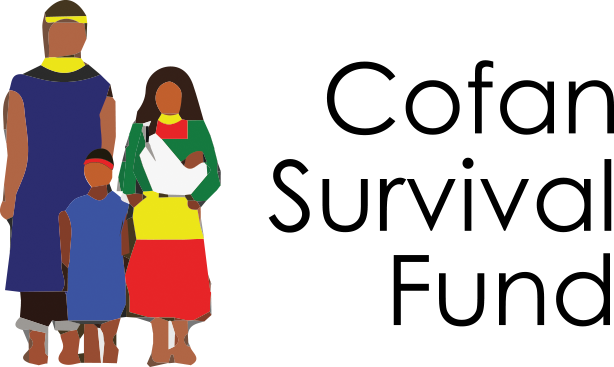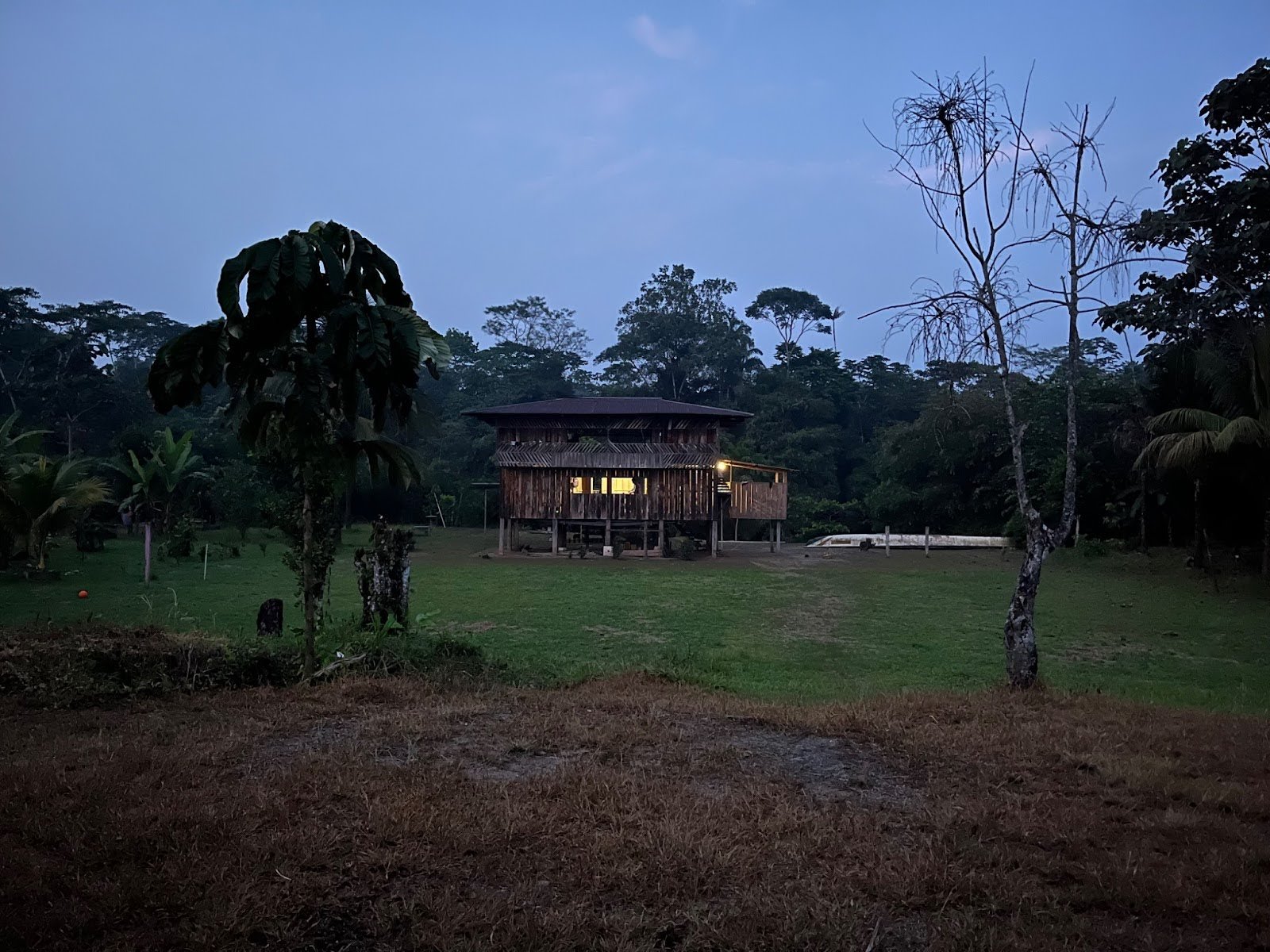Dear CFS friends and supporters,
After Mike’s newsletter last month, we thought it would be a good idea to introduce you to the U.S side of the Cofan Survival Fund. In our two and a half decades of existence, we have gained a lot of supporters, and there have been a lot of developments, so we wanted to take some time to give our newer supporters a broader overview of the work and the projects you support.
With that in mind, our next few newsletters will be written by members of the board, who will introduce not only themselves but the projects happening at CFS/FSC. We’ll also be inviting you to join us for a live event with Felipe Borman and others working at the heart of these projects. This will be an opportunity to ask questions, and to gain a deeper understanding of the territories, the threats the Cofán people and lands are facing, and what your investment in this work makes possible.
In this newsletter
Danica Novgorodoff and Serena Himmelfarb, the two newest board members and both artists, briefly share experiences and photos from a recent trip to some of the Cofan territories.
A note from Serena
Hi, I’m Serena Himmelfarb (they/them) I joined the CSF board in 2020, joining my aunt Susan Himmelfarb and father John Himmelfarb. Like them, I became involved because of our connection to their cousin Randy Borman, and our shared passion for the environment. I am an art professor with an interest in science, most recently teaching at the Marine Biological Laboratory in Woods Hole, MA.
A note from Danica
Hi, I’m Danica Novgorodoff (she/her), and I’ve been on the CSF board since late 2021. I first became involved with the Cofán after visiting Zábalo on an ecotour with my husband in 2015 (on our honeymoon!). Randy Borman was our guide, and inspired me deeply to get more involved. I’m an artist, writer, and graphic novelist, and I recently published a children’s book on scientist Alexander von Humboldt’s South American explorations. I live in Louisville, Kentucky with my two daughters and husband (after considering New York City home for 16 years).
In February, Danica and Serena arrived in Ecuador with a group of five others (including Danica’s mom). In ten days, we visited a Cofán project site in the mountains and two Cofán communities in the rainforest:
Day 1 (18) Arrival in Quito, transport to our Guayllabamba hotel, El Cano
Day 2 (19) El Mitad del Mundo, Quito
Day 3 (20) Left Quito after breakfast, traveled by car to Miskiyacu, crossed river in canoe (Felipe at the helm, against currents!), hiked for about 45 minutes to get to the camp site in Loreto, the “Lifeboat Garden” there has over 60 plant species they are cultivating as it gets too hot from climate change in the Zabalo community for some plants to survive. Toured and harvested edible plants with chef Ken, which he then turns into a marvelous chicken dinner cooked in the outdoor kitchen, on an open fire. The chickens name was “El Enimigo,” for his persistent habit of waking everyone up at 4:30 or 5AM.
Day 4 (21)Travel to Tierras Orientales by car then Zabalo by boat (3 hour drive, 3 hours boat.) The sun set during boat ride, which meant Felipe (on the motor in the back) had to work with Ken (at the tip of the boat) to navigate, using a flashlight to signal direction and obstacles in the water.
Day 5 (22) Day For Girls presentation in AM, then met up with medical brigade, Seguro Campesino. Excited to see in person what we’ve been working to fund through CSF. Carlos, on staff at the Quito headquarters for our NGO, is the administrative and logistical bridge between the Cofan communities and the Ecuadorian governments public medical program, and without him this team of doctors would not have been able to come to this community. Catfish dinner, stunning silver with black and white stripes.
Day 6 (23) Trip up the Zabalo River to see wildlife. Lots of Squirrel Monkeys, a Red Wooly Monkey, plus we hear a Howler monkey…it is far away, but sounds like a train blasting by. We see beautiful blue Morpho butterflies, and are escorted by Kingfishers who make sure we find our way out of their territory. Feels like around 100 degrees, with full humidity. Miraculous pineapple slushies when we returned from boat ride. Dinner is a beautiful spread of traditional foods, on a ‘tablecloth’ of palm. Too hot to sleep, experiencing impact of climate change.
Day 7 (24) Back on boat, 3 hours, saw pink dolphins on return trip.
Day 8 (25) Travel to Chandia Na'e on Columbian border. We eat watermelon on the canoe, it is very hot. During a very shallow portion of the canoe trip we are asked to get out to lighten the load, and we take the opportunity to swim and ride the current a bit. The men hired to take us, along with Ken and Felipe, often have to hop out an push the canoe. After eventual arrival we meet our hosts, who live in an stunning house.
They serve us an amazing lunch. After lunch, some of us go out exploring, look at mushrooms, are introduced to “mountain grapes.” Spend the night in tents in the community center, an open air shelter near the soccer field. Wake up at 3 AM to record jungle sounds.
LISTEN: RECORDING IN CHANDIA NA’E AT 4:00 AM
Day 9 (26) Travel back by canoe again, then van. Hard to imagine leaving already.
Day 10 (27) Dinner with Claire Nicklin, CFS board member, then 45 minutes to airport for flight back to USA.















